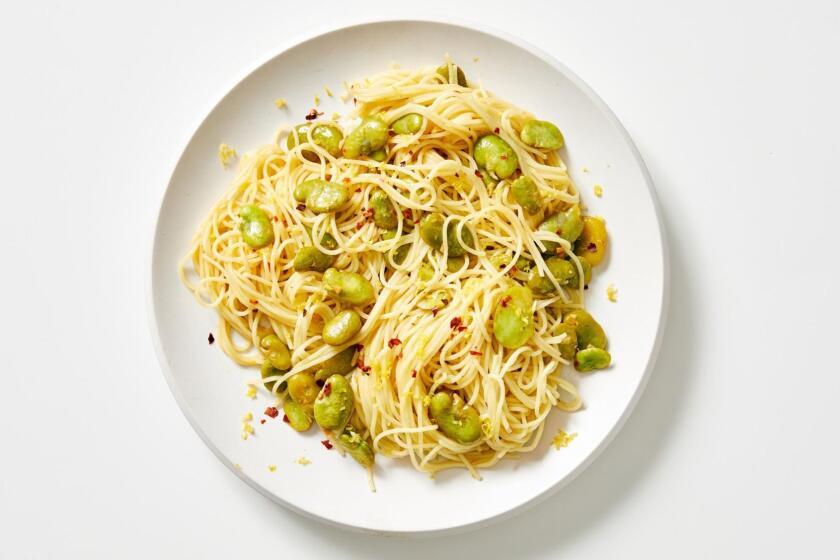How to prepare fresh fava beans for cooking
Preparing fresh fava beans is tedious, I won’t lie. But if you tackle the process separately from cooking with them for a meal, you’ll find the work worth the effort.
Most traditional preparation methods tell you to remove the fava beans from their outer pods, then blanch them in boiling water and finally, pinch them to remove the skins surrounding the inner beans (or to not remove the inner skins at all). While this method works fine, I prefer to peel the inner skins from the beans and do it before blanching. Here’s why:
- Though it may seem easier to peel the fava beans after cooking, the time difference you save between that and peeling them while raw is nominal, only saving a couple of minutes from the overall time commitment.
- Pinching cooked fava beans to remove their skins increases the chance you’ll actually damage the beans inside since they’re softer than when raw and, thus, more prone to breaking.
- Peeling the fava beans from their outer pods, then stopping to boil them, then having to pick back up in the peeling process is clumsy and inefficient. Completing both peeling tasks sequentially, then boiling them until tender allows you to package them as soon as they are cooled.
- Cooking completely peeled fava beans is twice as fast as when they’re still in their skins, and you’ll be able to judge their doneness much easier since you can simply bite into one instead of having to wait until the unpeeled bean is cooled to peel it first.
- The color difference between beans that are cooked skinless versus skin-on is more vibrant.
From a spiced sausage pasta to bright, tangy ceviche, fresh fava beans are a wonderful springtime indulgence.
The differences between methods may seem minute but when dealing with such a precious ingredient, the small details matter.
Start with fava beans in their pods. Whatever weight you start with, know that you will yield 1/5 of that weight in peeled, cleaned fava beans. So, for every 1 pound/455 grams of fava beans in pods, you will get approximately 3 ounces/85 grams of cleaned beans to cook with.
First, snap off the stem end of the pods with your fingers and simultaneously pull down one side of the pod to remove its string. Then use your fingertip to unzip the pod along the string line and open it. Remove the fava beans and place them in a bowl. Repeat with the rest of the pods.
Once you have your de-podded beans, use either the tip of a paring knife or your (clean) fingernail to score a line from the fava bean’s “mohawk” to its opposite end, along the edge side of the bean. Then gently pinch the two ends of the bean together, like pinching the ends of a baked potato to open its skin, and grab the skin where it opens to peel it away from the inner bean. Separate the two lobes of the bean and place them in a bowl. Repeat with the rest of the beans.
Bring a large saucepan of water to a boil and set a spider strainer next to it. Meanwhile, set a large bowl filled with ice water next to the pot and place a large strainer or small colander in the bowl. Add a large pinch of salt to the boiling water, then stir in the peeled fava beans. Cook, stirring occasionally until they’re light, bright green and al dente, 2 to 3 minutes.
Using the spider strainer, remove the beans from the boiling water, drain briefly, then transfer to the strainer into the ice water. Stir briefly to make sure they cool evenly, then lift the strainer or colander to remove the beans from the ice water. Let the beans drain completely in the strainer or transfer to paper towels to dry.
Transfer the beans to plastic storage bags and press out as much air as possible. Freeze the beans in the bags for up to 3 months. Use from frozen or let thaw for 10 minutes at room temperature before using.
Use fresh fava beans in these recipes:
Fresh Fava “Ceviche” With Grapefruit and Chilies
Fresh Fava and Merguez Orecchiette With Manchego
Fava Bean Scampi
More to Read
Eat your way across L.A.
Get our weekly Tasting Notes newsletter for reviews, news and more.
You may occasionally receive promotional content from the Los Angeles Times.














